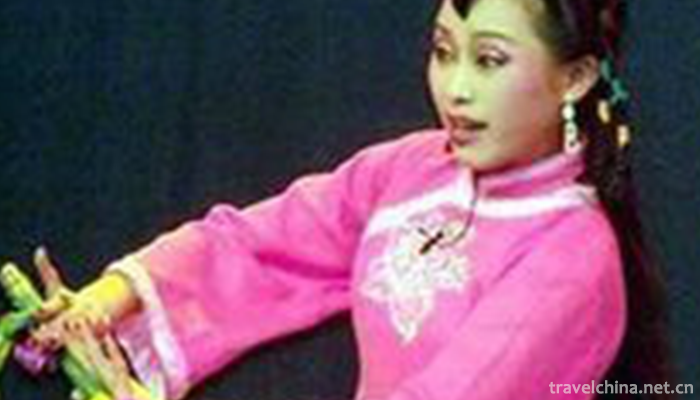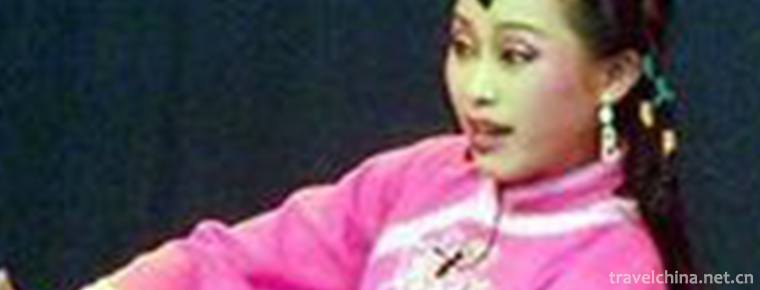Qinghai Han Minority Folk Minor
Qinghai Han Minority Folk Minor
Qinghai Han folk minor is one of the genres of Chinese folk songs. Generally speaking, it refers to folk songs and dances popular in town fairs. Through the spread of the past dynasties, and through more artistic processing, it has the characteristics of balanced structure, regular rhythm, delicate melody and gentle. There are many popular folk songs, such as ditties, slang, alley ballads, village ditties, folk decrees, popular songs, tunes, silk tunes, silk chords and so on.
In 2011, Qinghai Han folk minor was listed in the third batch of national intangible cultural heritage list with the approval of the State Council.
In May 2011, the Qinghai Han folk minors declared by Xining City of Qinghai Province were listed in the third batch of national intangible cultural heritage list with the approval of the State Council.
historical origin
The minor reflects a wide range of social life. It is not restricted by a specific social stratum and specific working environment. It reflects not only peasants, but also the love and marriage, separation and love, love and love, local customs, entertainment games, natural common sense, folk tales of various strata, such as urban small handicraftsmen and other workers, businessmen, citizens and even geisha, peddlers and pawns, monks and nuns, vagrants and beggars. Almost everything.
The emergence and development of minor has gone through a long period of time. Some narrative chapters in the Book of Songs have bred some factors of this genre. Xianghe Song in Han Dynasty is a form of singing accompanied by silk and bamboo. It is obviously different from apprenticeship ballads (such as solo songs). Xianghe Song can be said to be one of the sources of minor tunes. During the Wei, Jin and Southern and Northern Dynasties, folk songs of Yuefu appeared in time series, such as Midnight Four Seasons Song, Five Turns from the Army, Moon Festival Following Yangliu Song, from which we can see several kinds of traditional minor tunes widely spread in later generations, such as Four Seasons, Wugeng and December's body structure principle. By the Sui and Tang Dynasties, more folk songs were selected and refined, and became part of rap, singing and dancing performances, called tunes, which was also the early form of minor genres. After the Song and Yuan Dynasties, with the increasing prosperity of China's urban economy, minor has entered a mature stage of all-round development. On the one hand, many folk tunes introduced from the vast countryside to the city have become part of minor tunes through singing and processing by artists. On the other hand, Xiaoling and Santao, which rose in the Yuan Dynasty, gradually diverged from the stringent Southern and Southern Songs in the same style to meet the needs of the citizen class in the process of dissemination, and became a popular, smooth and graceful song that still retained the name of the song.
artistic characteristics
Qinghai Han folk minor is one of the genres of Chinese folk songs. Minor tune is a general term used only recently. Minor, also known as "ditty", "slang" and "tune of the hour", is a folk song used to express feelings, entertainment and recreation in people's daily life, as well as in wedding and funeral festivals. Because there are professional artists and semi-professional artists'singing, and they are inextricably linked with opera and opera, so there are more processing and refining components, less improvisation of words and songs, more stereotyped, more mature and perfect in art. So the minor is relatively widespread, covering cities and towns, and its content extensively involves the lives of people from all walks of life. Rural minor reflects rural daily life, especially the love and marriage life of rural women. Urban minor reflects the life of small handicraftsmen, businessmen, citizens, prostitutes and beggars at the bottom of society, as well as entertainment and play, natural scenery, life knowledge and folk stories. The minor shows delicate and tortuous feelings, regular forms and rich and varied expression techniques. According to different contents, minors can be divided into four categories: Lyric songs, funny songs, nursery songs and folk songs.
Most minors belong to the form of subsection song, a song with multi-paragraph words, often using four seasons, five gens, twelve-hour time series, multi-side, more detailed statement content. In order to meet the needs of multi-paragraph words, the melody expresses a certain mood (soft, sad or happy) concisely, with strong melody, fluent melody, tactful twists and turns, rich and changeable melody lines and strong expressive force. The performance of Meihu in Qinghai is different from that of Qin Opera. In Qinghai, the performance of Qin Opera is based on the singing, music and work of Shaanxi Qin Opera, often with the guidance of the "authentic Qin Opera" master. Meihu Opera, on the other hand, has a strong local flavor. Especially the Qinghai dialect, which is used for voicing words and making sentences, singing and speaking Bai, has absorbed many folk minors and flat-string music, and is more welcomed by the Qinghai people.


-
1.Dongpos braised pork
Dongpo meat, also known as roll meat and Dongpo stewed pork, is a famous traditional dish in Meishan and Jiangnan area
Time 2018-10-27 -
2.Shi Bao Village
Shibaozhai, a national AAAA-level tourist attraction, a national key cultural relic protection unit, is one of the 30 best new tourist landscapes in the Three Gorges of the Yangtze River,
Time 2019-02-08 -
3.Shigu Academy
Shigu Academy, located in Shigu Mountain, Shigu District, Hengyang City, an important city in central and southern Hunan Province, is the birthplace of Huxiang
Time 2019-02-08 -
4.Cutting Copper Dus Cutting Copper
Painting inscriptions on bronze pots, smooth lines; beautiful paintings of mountains and rivers on bronze plates, such as immersion... In many people's eyes, Du's bronze engraving,
Time 2019-05-09 -
5.Hakka Folk Songs in Meizhou
Meizhou Hakka folk song is a Hakka folk song sung in Meizhou City, Guangdong Province (Meijiang District, Meixian District, Xingning City, Wuhua County, Fengshun County, Dapu County, Pingyuan County,
Time 2019-06-03 -
6.Nanjing White Bureau
Nanjing Baiju is an ancient type of music in Nanjing area. The "Nanjing tune" in the Yuanqu brand is the original tune of Baiju's ancient tune. It has a history of more than 700 years. It wa
Time 2019-06-07 -
7.Daoism in Northern Shaanxi
As one of the traditional folk songs in northern Shaanxi, Daoqing in northern Shaanxi was originally called "Qingjian Daoqing". Later, because "Longdong Daoqing" and "Shenchi
Time 2019-06-13 -
8.Zhenba Folk Song
Zhenba folk song is a huge cultural wealth created and accumulated by Zhenba people for thousands of years, and it is an important component of Zhenba regional culture. Zhenba folk songs are very rich
Time 2019-07-25 -
9.Danba pig leg
Xiang Pigs are mainly green fodder. They never feed artificial feed. They graze with cattle and sheep all year round. They have long mouth and small ears, narrow head, straight forehead, narrow body and protruding back, strong limbs and fast running.
Time 2020-12-06 -
10.Ganzi milk dregs
The traditional biscuit snack "Tui" is made of milk dregs and butter. And made from milk dregs. After the milk i
Time 2020-12-06 -
11.Natural resources of Mianyang
In 2014, the annual precipitation of Mianyang City was 19.845 billion cubic meters, the surface water resources was 11.893 billion cubic meters, the total annual water resources was 11.882 billion cubic meters, and the annual average water resources per capita was
Time 2020-12-14 -
12.Guangan primary industry
In 2019, the sown area of grain in Guang'an City is 287000 hectares, and the total grain output is 1.8 million tons, an increase of 1000 tons or 0.04%. Among them, the rice output was 1.047 million tons, down 0.4%; the corn output was 448000 tons, an incre
Time 2020-12-19